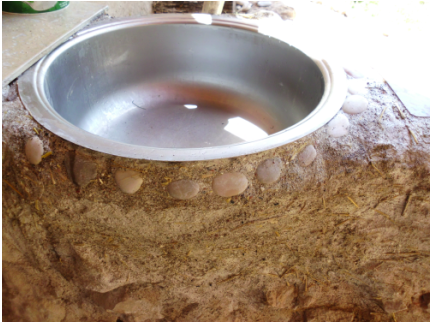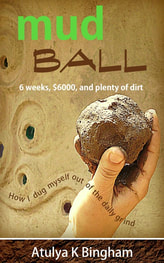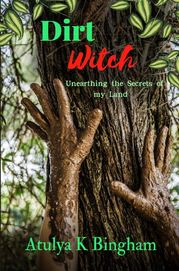Experimenting with Limecrete
 My limecrete sink
My limecrete sink
Both my kitchen sink and my back door step have been languishing in varying states of disintegration for years now (More on the builder’s propensity for uncompleted tasks here). The earth plaster around the sink, because it's always wet, falls off every year.
As for the back step, I finally covered the earthbags under the threshold with earth plaster. But it wasn’t a brilliant decision. Shoes and boots continually bashed it. Earth plaster is great on walls, but doesn’t stand up well to constant impact.
I’ve long been fascinated by lime. So I began a series of experiments with lime and limecrete. And I'm mighty happy with the results. Here are 5 great ways to make lime plaster or crete.
NOTE: Lime is not toxic, but it is caustic. Always wear gloves, and be careful not to let it splash into your eyes. Goggles are recommended too. See the full health and safety guide for using lime here.
1. BOG STANDARD LIME PLASTER/MORTAR
Ingredients: One part slaked lime to 3 parts sand.
Method: Mix it up and slap it on. Add water to taste. As always with lime, don’t let it dry too quickly. Keep wetting with a sponge for a few days to prevent cracking and brittleness.
Result: Not a crete as such, but a great, hard-wearing plaster/mortar which stands up brilliantly to wet conditions. Stronger than earth plaster for sure, but a little brittle. Stupendously easy to make, though admittedly not especially organic-looking.
2. STRAW-ENHANCED LIME PLASTER
Ingredients: The same as bog standard lime plaster but add plenty of straw
Method: The same as lime plaster except leave the straw to soften for a few days too, if possible.
Result: Stronger than bog standard lime plaster and less liable to crack. Looks more organic because of the straw. Looks even better if you add some sort of natural colouring like Turkish red tea or boiled walnut husk.
3.BRICK DUST-CRETE
A friend of mine added brick dust instead of straw and swore by it, so I puttered down to the brick yard with a sack and scooped up a little.
Ingredients: One part slaked lime, 1.5 parts sand, 1.5 parts brick dust (you can alter the parts of brick dust and sand on this without too much impact).
Result: Stronger and more water resistant than lime plaster.
4. MARBLE DUST-CRETE
I admit I haven’t tried this one myself, however I saw the Topak earthbag dome in Capadoccia which is coated in a marble dust limecrete to render it water resistant. Domes are not a great idea unless you live in a desert, because mud plaster isn’t waterproof. Could marble dust-crete be a more sustainable replacement for Portland cement?
Marble in and of itself is not much more ecological than Portland cement (Turkey’s forests are currently being ripped up by marble quarries so that the middle class can boast about their glorious marble sink). However, the dust is a waste product of the quarries, so it makes sense to upcycle it.
The recipe is much the same as the brick-crete, but with marble dust instead of brick dust.
5. MY OWN DELUXE LIMECRETE
This is my favourite concoction. It has now had three months to harden. And the result? Great. My backstep is finally holding up.
Ingredients: Two parts lime, two parts sand, one part brick dust, one part ash, one part straw, an egg white or two (to taste).
Method: Mix it all up in a cauldron, whisper a few encouraging words at the mixture, then pour.
Why the egg whites? Because if the Great Wall of China has them, I want them.
As for the back step, I finally covered the earthbags under the threshold with earth plaster. But it wasn’t a brilliant decision. Shoes and boots continually bashed it. Earth plaster is great on walls, but doesn’t stand up well to constant impact.
I’ve long been fascinated by lime. So I began a series of experiments with lime and limecrete. And I'm mighty happy with the results. Here are 5 great ways to make lime plaster or crete.
NOTE: Lime is not toxic, but it is caustic. Always wear gloves, and be careful not to let it splash into your eyes. Goggles are recommended too. See the full health and safety guide for using lime here.
1. BOG STANDARD LIME PLASTER/MORTAR
Ingredients: One part slaked lime to 3 parts sand.
Method: Mix it up and slap it on. Add water to taste. As always with lime, don’t let it dry too quickly. Keep wetting with a sponge for a few days to prevent cracking and brittleness.
Result: Not a crete as such, but a great, hard-wearing plaster/mortar which stands up brilliantly to wet conditions. Stronger than earth plaster for sure, but a little brittle. Stupendously easy to make, though admittedly not especially organic-looking.
2. STRAW-ENHANCED LIME PLASTER
Ingredients: The same as bog standard lime plaster but add plenty of straw
Method: The same as lime plaster except leave the straw to soften for a few days too, if possible.
Result: Stronger than bog standard lime plaster and less liable to crack. Looks more organic because of the straw. Looks even better if you add some sort of natural colouring like Turkish red tea or boiled walnut husk.
3.BRICK DUST-CRETE
A friend of mine added brick dust instead of straw and swore by it, so I puttered down to the brick yard with a sack and scooped up a little.
Ingredients: One part slaked lime, 1.5 parts sand, 1.5 parts brick dust (you can alter the parts of brick dust and sand on this without too much impact).
Result: Stronger and more water resistant than lime plaster.
4. MARBLE DUST-CRETE
I admit I haven’t tried this one myself, however I saw the Topak earthbag dome in Capadoccia which is coated in a marble dust limecrete to render it water resistant. Domes are not a great idea unless you live in a desert, because mud plaster isn’t waterproof. Could marble dust-crete be a more sustainable replacement for Portland cement?
Marble in and of itself is not much more ecological than Portland cement (Turkey’s forests are currently being ripped up by marble quarries so that the middle class can boast about their glorious marble sink). However, the dust is a waste product of the quarries, so it makes sense to upcycle it.
The recipe is much the same as the brick-crete, but with marble dust instead of brick dust.
5. MY OWN DELUXE LIMECRETE
This is my favourite concoction. It has now had three months to harden. And the result? Great. My backstep is finally holding up.
Ingredients: Two parts lime, two parts sand, one part brick dust, one part ash, one part straw, an egg white or two (to taste).
Method: Mix it all up in a cauldron, whisper a few encouraging words at the mixture, then pour.
Why the egg whites? Because if the Great Wall of China has them, I want them.




